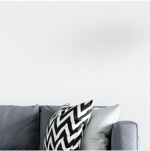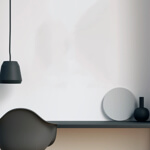Cornelis Schut (Antwerp 1597 - 1655)
See the mind of the artist racing, laying out the composition, the chalk dancing on the beautiful blue-tinted laid paper. Some parts (the donkey) are left unfinished, little more than mere suggestions, while other areas are fully worked out. A masterful sketch by a very giften baroque artist.
Cornelis Schut was born in Antwerp in 1597. After training and working for a few years in the workshop op Peter Paul Rubens, he became a member of the guild of St Luke in 1618. Between 1624 and 1627 he lived in Rome, where he was one of the founding members of the Bentvueghels, a society of Flemish and Dutch artists who worked in Rome. His nickname or “bentnaam” was ‘Brootsaken’ (‘bread bags’). In 1627-1628 the artist was in Florence, where he designed tapestries for the Arrazeria Medicea, the tapestry factory founded by Cosimo I de Medici. In the early 1630’s he returned to Antwerp.
In 1635 Schut collaborated on the decorations for the Royal Entry of the Cardinal-Infante Ferdinand in Antwerp, a project that was overseen by his former master Rubens. That same year, he was also commissioned to work on preparations for the Joyous Entry in Ghent. Schut collaborated on many other projects, alongside artists such as Gaspar de Crayer and Theodoor Rombouts. He painted the figures in many of Jan van Kessel’s flower garlands. Schut was regularly commissioned for altarpieces in churches and monasteries across the Southern Netherlands, but also further afield, such as in Cologne. In the Antwerp cathedral of Our Lady he painted the ceiling decoration of the dome, which depicts the Assumption of Mary; for the Antwerp Jesuit church he painted one of the four alternating altarpieces, the Ascension of Mary.
Stylistically, Schut was influenced by his contemporary Abraham Janssens, as well as by several Italian painters, such as Guercino and Guido Reni. Although he certainly borrowed motifs and stylistic elements from his master Rubens, the latter’s stylistic influence on Schut was altogether rather limited. The present newly discovered work, most probably a preparatory study for a now-lost painting, is very characteristic of Schut’s drawn oeuvre. It depicts the Holy Family during the Flight into Egypt, a popular theme in the Flemish baroque. The figures clearly show Schut’s hand, especially in the faces and hands, as well as in details such as the angel heads in the top right corner.
Provenance
Dutch private collection;
Private collection, Antwerp.
- X
- Tumblr
-
 Cornelis Schut (Antwerp 1597 - 1655)Cimon & Iphigenia, from Bocaccio's Decamerone19 x 28,7 cmoil on paper, laid down on panel
Cornelis Schut (Antwerp 1597 - 1655)Cimon & Iphigenia, from Bocaccio's Decamerone19 x 28,7 cmoil on paper, laid down on panel -
 Cornelis Schut (Antwerp 1597 - 1655)The Rape of Europapencil on paper190 x 280 mm
Cornelis Schut (Antwerp 1597 - 1655)The Rape of Europapencil on paper190 x 280 mm -
 Cornelis Schut (Antwerp 1597 - 1655)Apollo & Daphnegraphite and pen and ink on paper220 x 284 mm
Cornelis Schut (Antwerp 1597 - 1655)Apollo & Daphnegraphite and pen and ink on paper220 x 284 mm





